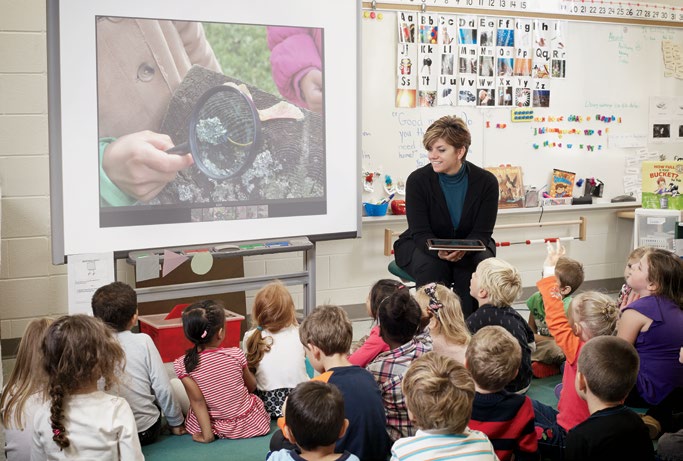Share this page
Kindergarten teachers use blogs, Skype and Twitter to connect students across the province and beyond.
By Stefan Dubowski
Photo: Matthew Liteplo

Challenge
Help students learn about their communities and connect with people in other schools and cities.
Solution
Use blogs, Skype and Twitter to link classrooms around the province and beyond, enabling children to compare their own environments with other places.
Lessons Learned
Teachers in the York Region DSB developed a web-based program to teach youngsters about their own communities and places beyond. Dubbed “We Can See,” the project helped students in the 2012–13 school year understand what makes different cities and classrooms unique, and also taught children to be responsible citizens online.
“We want our kids to be 21st-century thinkers and explorers,” says Jocelyn Schmidt, OCT, a kindergarten teacher at Lorna Jackson PS in Woodbridge. “We have the technology for that.”
Various technologies were used when taking part in the program. Some teachers shot pictures of their schoolyards and local landscape with iPads and digital cameras. Some had students make and narrate videos. The teachers then uploaded the material to a central blog (wecanseeprojectsharingspace.blogspot.ca) and invited other classes to respond.
Angela Harrison, OCT, a kindergarten teacher at Lake Simcoe PS in Keswick, used Twitter to invite teachers and students to participate in 20-minute Skype calls with her class. Prior to each session, students researched aspects of the other class — its location or the photos and movies the class had made available online — and developed a few questions to ask during the call. Students established a protocol of politeness: standing up to pose a question, waiting for the person to finish answering before speaking, thanking participants for joining.
We Can See created some truly long-distance connections. Schmidt’s students had a Skype session with a kindergarten class in Monterrey, Mexico. The children learned that the school in Monterrey has a security guard and the children wear uniforms.
Observations
Students learned to hone in on their surroundings, comparing them with the places they visited virtually. Joanne Babalis, OCT, who teaches kindergarten at Bond Lake PS in Richmond Hill, says that during outdoor walks, students started to pick up on details. “We saw snowflakes and began to develop theories about how they were created. ”
The teachers learned a few lessons, too. “It really inspired them to try new technologies,” Harrison says.
For 2013–14, some participants are using the We Can See framework for a new project: Looking Closely Collaboration. This program has children examining their surroundings, along with seeds, flowers and other objects in detail. Learn more at kidblog.org/LookingClosely.
Helpful Hint: Don’t worry about making a mistake. In fact, embrace the chaos. Yes, sometimes Skype calls don’t connect. Internet links may drop. “Kids need to see us taking those risks and dealing with it when they don’t work,” says Angela Harrison.
You’ll need:
Steps: